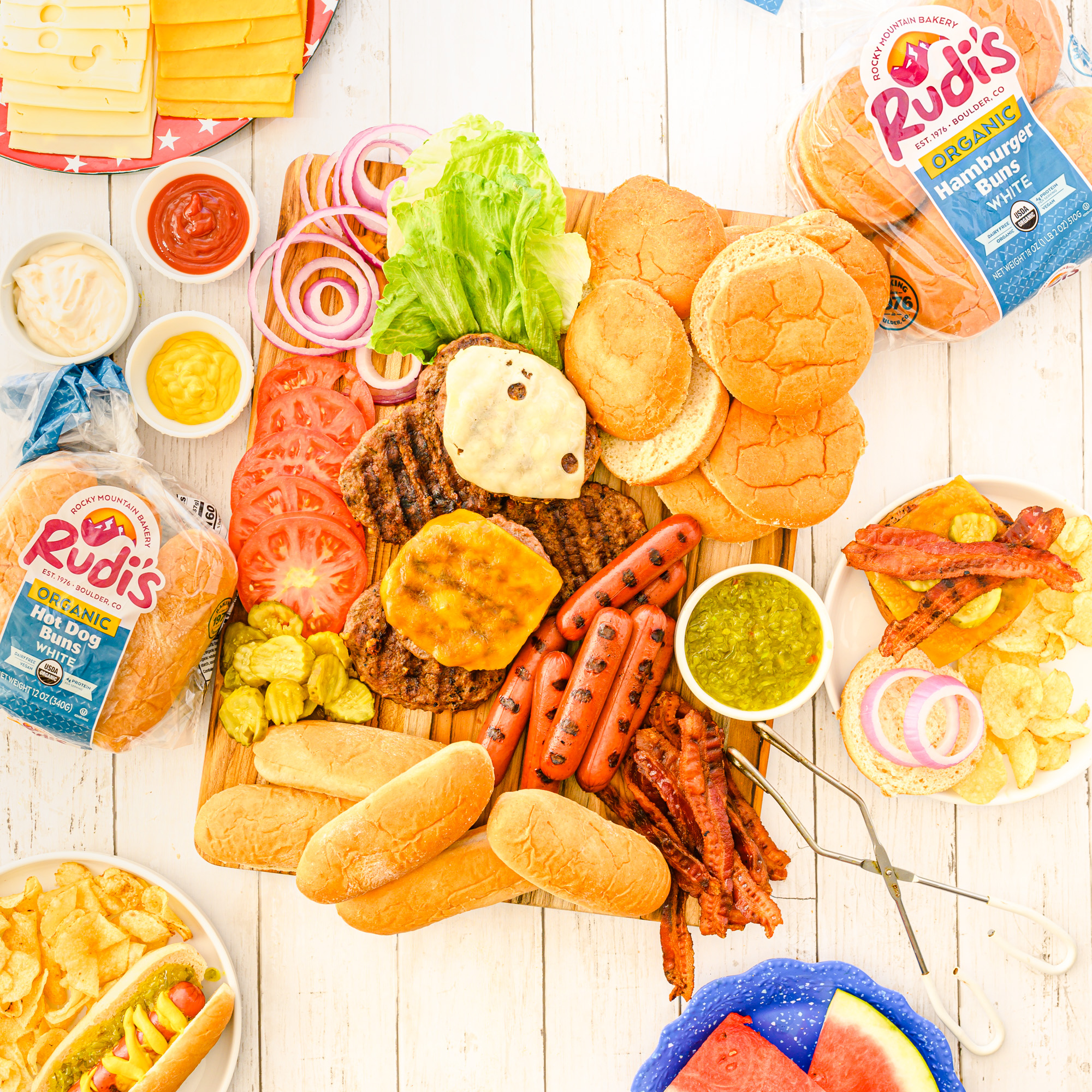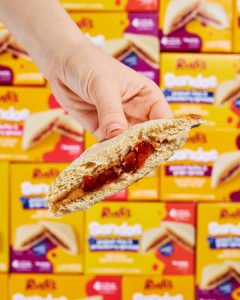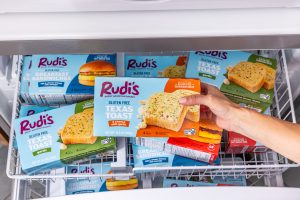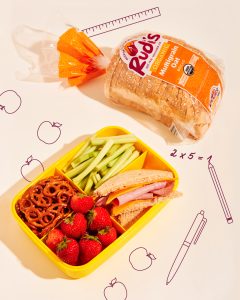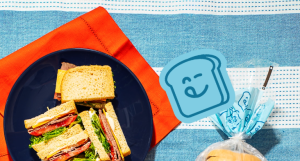Brats are as iconically all American as watermelon and lemonade, but they didn’t start out that way. Learn some basic brat history and facts you can use to impress friends at your next BBQ. Plus, our dietitian Jessie shares simple ways to make the best brats for simple and delicious backyard fare.
The Types Of Bratwurst You Can Buy
In Germany you’ll find up to 40 different types of brats, varying in length, width, ingredients, and specificity to the region. But in America, most brats are made from ground pork (though sometimes veal or beef), are about the same size, and fit nicely into a quality hot dog bun. Here are the types you’ll find at the grocery store:
Raw: Sometimes called fresh brats, these are sausages that contain raw ground meat inside. Most of the brats sold at the meat counter come this way and some pre-packaged trays also contain uncooked brats. Fresh bratwurst are sometimes labeled as German sausages or even Italian sausages.
Pre-cooked: These brats come already cooked (usually steamed or smoked) and just need to be heated quickly on the grill (ie: your classic Johnsonville brats). They’re great for tailgates, but are easy to overcook since they can dry out quickly.
No casings: Also known as skinless brats, these have no outer casing to bite through. They’re kind of like a pork sausage-shaped hamburger – a great option for kids or people who don’t like the casing, but naturalists would say they’re less juicy and not a true brat recipe experience.
Flavored: Many brands and meat counters experiment by infusing brats with flavorful mix-ins (as both raw and pre-cooked options). You may find beer brats, cheese brats, bacon brats, apple brats, brats with green onions, spices, or peppers, or even pineapple brats.
Do I Need To Boil Brats Before I Grill Brats?
Short answer: You don’t have to.
Boiling raw brats before cooking them on the grill is a popular method because it ensures the inside of the brat gets cooked through before the outer casing burns or bursts open from the heat of the grill. That scenario is not ideal because all of the juiciness of the brat would then run out. And your poor brats would be burnt on the outside and undercooked on the inside … or just too dry. Grilling brats increases the prep time and total time of making an easy recipe like a bratwurst, but it can often be worth it.
To boil brats (called parboiling), place the raw bratwurst sausages in a large saucepan or cast iron skillet on the stovetop. Add water (or a lager or Oktoberfest beer) until they’re covered by a few inches. Bring the liquid to a boil over medium-high heat, then reduce the heat to a simmer, uncovered, for 10 minutes. After that, use tongs to move them to the grill grates to cook bratwurst over medium-high direct heat for a cook time of 3-4 minutes per side.
But there is a way to cook brats without boiling them first. To do this cooking method, you need to create indirect heat on your grill. Preheat the grill as you normally would to about 350 degrees, then turn off the burners on one side of the grill only while keeping the burners on the other side set at medium-high. The no-burner low heat side is your indirect heat spot. Grill the brats on that side until they reach an internal temperature of 145 degrees on a meat thermometer, and then move them over to the direct (medium-high) heat side to sear and finish grilling for about 3-4 minutes per side.
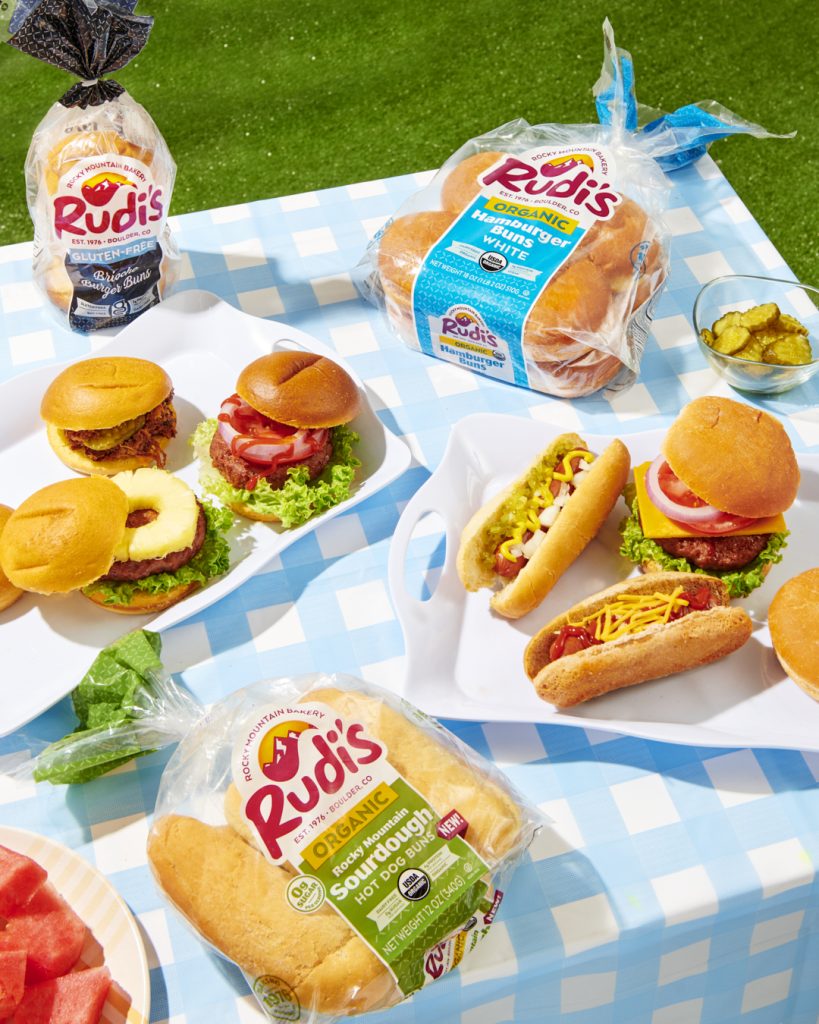
5 Tips For Better Brats
Keep these tips in mind for grilling the best brats.
- Buy fresh. For the best flavor, and when time allows, always opt for raw brats instead of pre-cooked ones. Or, make your own using a bratwurst recipe.
- Boil ‘em first. You’ll want to pre-cook the brats before finishing them on the grill. Alternatively, you could use the indirect heat grilling method described above.
- Don’t poke ’em. It may be tempting to poke at the brats while they’re grilling, but don’t do it. That would cause too much of the juice and flavors to run out, which could cause flare ups on the grill and also result in dry sausages. If you want to check them with a meat thermometer, poking is necessary – just try to do it in one spot, instead of all over.
- Use a good bun. Don’t make this an afterthought. A too small or too dry bun can dampen a good brat meal. Try Rudi’s sourdough hotdog buns for a truly elevated experience.
- Add a topping (or several). Traditionalists say brats should only be topped with mustard and maybe sliced onion. Others say mustard and sauerkraut are OK, but never ketchup. We say, get creative with whatever condiments you like!
Brat Toppers That Slay
Here are some topper ideas to set out the next time brats are on your menu:
- Grilled onions and bell peppers
- Chopped white or green onion
- A variety of grainy mustards
- Sauerkraut or other pickled veggies
- Ketchup, BBQ sauce, or mayo
- Coleslaw or applesauce
- Chili and shredded cheese
- Sliced jalapeños
- Dill pickles or pepperoncini
- Crushed potato chips
- Potato salad
- Guacamole
- Crushed pineapple
- Hot honey or black pepper honey
Backyard BBQ Trivia
Did you know?
- The first documented evidence of bratwurst in Germany dates back to 1313. Bratwurst comes from two German words: ‘wurst’ which means sausage, and ‘braten’, which means to pan-fry.
- Brats were first introduced to MLB stadiums in 1954 when the Boston Braves relocated to Milwaukee. They were sold for $0.35 and topped with tomato sauce, green bell pepper, and onions.
- August 16th is World Bratwurst Day. This informal holiday was officially declared in 1953 by the city of Sheboygan, Wisconsin to help celebrate their 100th year as a municipality.
Are Brats Healthy?
A bratwurst itself rarely falls into the health-food category. It tends to be made from fatty cuts of pork or beef, meaning it can be high in calories (kcal), saturated fat, and cholesterol. However, people rarely eat a bratwurst just by itself. And, when you select an all-natural brat or make one with a homemade sausage recipe, you can avoid unwanted additives, such as nitrates, added sugars, and preservatives.
As part of a whole meal, a brat provides a great opportunity for nutritional balance. You get protein and fats from the brat and carbohydrates and whole grains from the bun. And healthy side dishes, such as a salad or fruit dish, provide opportunity for more key nutrients, including fiber, vitamin A, vitamin C, potassium, and magnesium.
THE BOTTOM LINE
When it comes to preparing brats, you have a lot of options. Whether or not you pre-boil the brats, which buns you serve them in, the toppings you add, and the side dishes that come with it. … Each of these are opportunities to turn a simple brat meal into a fabulous culinary experience and a chance to insert more well-rounded nutrition, too.
Our dietitian shares the types you can buy, how to prepare brats, and a variety of popular toppings.
Written by Jessie Shafer.
Jessie is a Registered Dietitian Nutritionist living in Colorado where she splits her time among nearby playgrounds, typing away at her trusty laptop, and heating up her home kitchen with delicious experiments. A former magazine editor-in-chief, Jessie has a long career in food publishing and health writing. She is currently the editor at The Real Food Dietitians and a nutrition consultant through her business crdible.

